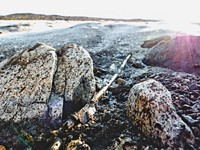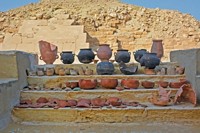Advertisement
Grab your lab coat. Let's get started
Welcome!
Welcome!
Create an account below to get 6 C&EN articles per month, receive newsletters and more - all free.
It seems this is your first time logging in online. Please enter the following information to continue.
As an ACS member you automatically get access to this site. All we need is few more details to create your reading experience.
Not you? Sign in with a different account.
Not you? Sign in with a different account.
ERROR 1
ERROR 1
ERROR 2
ERROR 2
ERROR 2
ERROR 2
ERROR 2
Password and Confirm password must match.
If you have an ACS member number, please enter it here so we can link this account to your membership. (optional)
ERROR 2
ACS values your privacy. By submitting your information, you are gaining access to C&EN and subscribing to our weekly newsletter. We use the information you provide to make your reading experience better, and we will never sell your data to third party members.
Environment
Newscripts
Ancient Ointment, Arctic Goo
by Faith Hayden
July 27, 2009
| A version of this story appeared in
Volume 87, Issue 30

When aristocrat Thana Presnti Plecunia Umranalisa was cremated in the second half of the second century B.C., an intricate urn containing her remains was placed in an Etruscan tomb in a region now known and loved as Tuscany, Italy.
Per custom, Thana would be able to take some material possessions to her final resting place that would assist her in the afterlife, among them gold, amulets, and ritualistic objects. But Thana chose none of these things. Instead, when Italian archaeologists unearthed her remains centuries later, the only item of value included with her urn was a rectangular cosmetics case.
The case—made of maple and embellished with ivory, tin, and bronze—contained a few small rings, tweezers, two objects archaeologists believe to be combs, and amazingly, an alabaster jar still filled with the ointment that went into it more than 2,000 years ago.
The recovery and chemical study of this well-preserved organic substance "provided exceptional opportunity to reconstruct the composition of an ointment used in Etruscan times," Erika Ribechini, a researcher in the department of chemistry and industrial chemistry at Pisa University tells C&EN. "It is the first time that an Etruscan ointment was chemically characterized."

The ointment is solid, about 2 cm thick, and pale yellow. Chemical analysis of the stuff revealed it to be completely organic, made of a mixture of pine resin, mastic resin, and a vegetable oil, most likely from the seeds of a moringa tree.
Although the researchers can't say for certain what the purpose of the ancient ointment was, Ribechini suspects it was used as a moisturizing cream or skin balm. "Plant oil, due to its emollient properties, was most likely the base for the cosmetics, while pine and mastic resins were included for their pleasant aroma and possibly antioxidant properties," she says.
Ribechini and colleagues published their findings on the material in the July issue of the Journal of Archaeological Science (2009, 36, 1488).
Fast forward to, say, right now, to another mysterious substance. Giant blobs of a never-before-seen goo have been found floating in the Arctic waters off the coast of Alaska between Wainwright and Barrow, in the Chukchi Sea.
According to reports in the Anchorage Daily News and U.K.-based Daily Telegraph, the thick, stinky, black hairlike matter has been seen drifting in strands up to 12 miles long, ensnaring jellyfish and even a goose.
Hunters from Wainwright first noticed the strange substance in early July, and the Coast Guard was called out to investigate. After much speculation over what the gunk could be—an oil spill, some unknown organism unleashed from a melting iceberg, or an alien substance out of a horror movie, perhaps—the Coast Guard harvested samples of the icky stuff for analysis. The result was much less exotic than the speculation hinted at: It was simply an overly large algal bloom.
Faith Hayden wrote this week's column. Please send comments and suggestions to newscripts@acs.org.





Join the conversation
Contact the reporter
Submit a Letter to the Editor for publication
Engage with us on Twitter